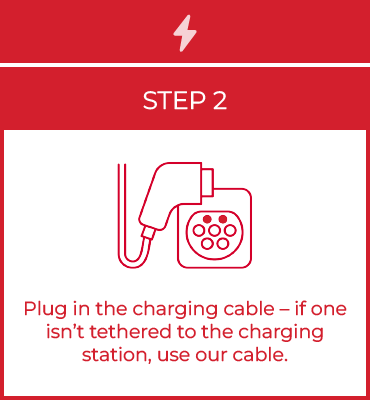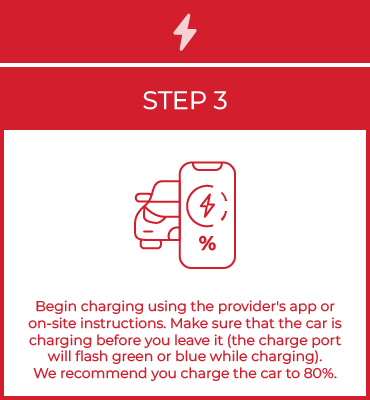Charging an electric vehicle
How do you charge an electric car or a plug-in hybrid?
Thinking of making the switch from petrol or diesel cars to an electric vehicle, or perhaps thinking of renting an electric vehicle with Avis to try before you buy? One of the most frequently asked questions for drivers before renting or buying an electric car is how do I charge my electric vehicle and how far can I travel in my electric vehicle?
Worries about charging and range anxiety are receding as public charging networks expand, reliable journey planner apps remove the worry of looking for a charge point and improvements to batteries extend the distance an electric vehicle can go.
How to find electric car charging stations
Having information on the location of charging points is key to planning trips and having sufficient autonomy for journeys. Before renting, we recommend that you search in advance for the charge point provider with the densest charging network along your route and at your destination.
Alternatively, you can also quickly search for charging stations with the help of an charging app like Zapmap.
Find the nearest electric vehicle charging station via Zapmap
Zapmap makes planning your electric vehicle rental journey simple, helping you locate public charging stations nearby and during your drive. You can also view details of each charge point (location, connectors, network, price, restrictions), filter by connector type and network and see user comments.
Electric vehicle rental car charging made easy
As electric vehicle technology developed, car charging cables were produced without a universal connector that would fit all electric vehicles. However, the seven-pin Type 2 cable has become a European standard and all cars manufactured in Europe today have this connector.
Most cars feature at least two types of connector, and adaptors are easy to use.
There are three levels of charging speed so you can manage your electric vehicle top ups at your own convenience.
Public charging
Using the public charging network is increasingly easy, thanks to the expansion of the network of charging stations, especially in city centres, allowing on-the-go charging.
Public charging points offer the possibility of both normal charging speeds and fast charging. Public charging can be between 3 and 10 times faster, depending on the outlet of the charging point and the type of chargers the vehicle uses.
Rapid charging
This is a type of recharging in a public place and with high levels of power, so it requires a complex electrical installation. With this system it takes between 5 and 30 minutes to charge 80% of a battery depending on the type of charger, cable and vehicle capacity.
How long does it take to charge an electric vehicle or plug-in hybrid?
Charging times depend on both the battery capacity and the power source. Direct current (DC) charging is the quickest but is not possible with every vehicle or charging station. Charging with alternating current (AC) is more common. Depending on the charging power, as an example, charging a Renault ZOE can take between 2.5 hours (22 kw) and 4.5 hours (11 kw).
Charging at home over a 3-pin plug is the slowest method of charging an electric vehicle and could take up to 24 hours.
Using a 7kW wallbox home charging unit will enable a car to be fully charged overnight.
Using a ‘rapid’ charger at a public charging station offering speeds of up to 50kW, an electric Vauxhall Corsa can be charged up to 80% in just 30min (Source: The AA).
How to calculate EV charging times
Did you know that there are many different factors that influence charging speed, but the two most important are electric vehicle battery capacity and charging power? Once these are determined, the calculation is very simple: Battery capacity/charging power = charging time.
Battery capacity
The battery determines the amount of energy that can be stored and therefore has a major influence on the time it will take to charge.
Battery capacity differs from car to car. For example, the Nissan LEAF has a battery capacity of 30 kWh, while the Tesla Model S has a capacity of 100 kWh.
How to charge your electric vehicle
To start charging
- Park the vehicle and turn off the engine.
- If there is no cable connected to the charging station, use cables from the vehicle.
- Roll out the charging cable completely to prevent the cable from overheating.
- Activate the charging station with the help of the electricity provider's app.
- Connect the plug to the charging station.
- Insert the plug into the vehicle's charging port.
- Charging starts automatically.
When vehicle is charged
- Disconnect the charging cable from the vehicle.
- Remove the plug from the charging station.
- Store charging cables back in the vehicle.




